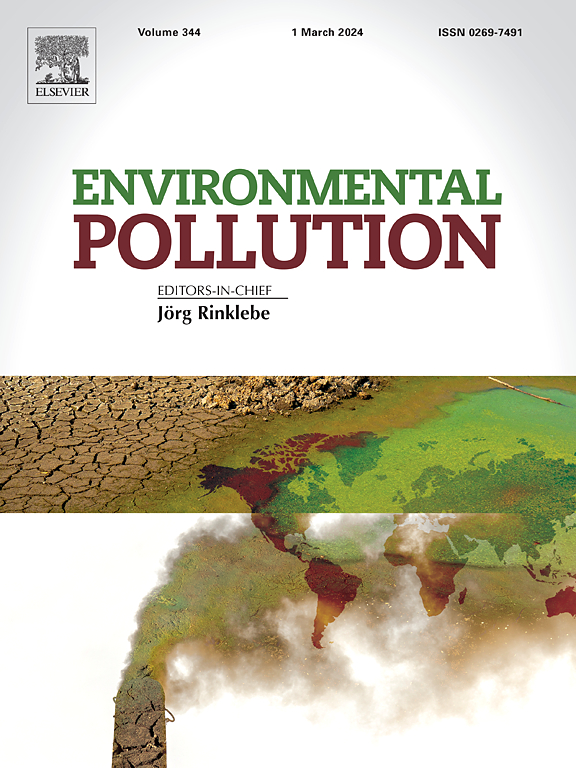硫化零价双金属用于被动修复地下氯化蒸汽
IF 7.6
2区 环境科学与生态学
Q1 ENVIRONMENTAL SCIENCES
引用次数: 0
摘要
本文章由计算机程序翻译,如有差异,请以英文原文为准。

Sulfidated zero-valent iron bimetals for passive remediation of chlorinated vapors in the subsurface
This study explores a novel application of sulfidated zero-valent iron (S-ZVI) bimetals for the treatment of chlorinated solvents in the vapor phase. The potential of these reactive materials was investigated through batch, column, and modeling tests. The materials were produced by disc milling of ZVI, sulfur (S), copper (Cu), and nickel (Ni) with molar ratios of 0.05 and 0.2. The reactivity of the materials was assessed through vapor degradation batch tests conducted under partially saturated conditions using trichloroethylene (TCE) as a model compound. Sulfidated materials with a 0.05 S/ZVI molar ratio were the most reactive, achieving up to 99% degradation of TCE vapors within 18 hours and first-order degradation constants of 5-5.7 d-1. Compared to the non-sulfidated materials, sulfidated ones remained reactive even after aging by exposure to air for 30 days. In all tests, C3-C6 hydrocarbons were detected as main byproducts, indicating β-elimination as the dominant TCE degradation pathway, with minor dichloroethylene and vinyl chloride amounts from the hydrogenolysis pathway. To evaluate the use of sulfidated bimetals as Horizontal Permeable Reactive Barriers (HPRBs) for treating chlorinated vapors in the subsurface, TCE diffusion column tests were performed using a 5 cm thick reactive layer of S-ZVI-Ni. These tests demonstrated up to 70% degradation over 25 days. By integrating the column test results into an analytical model, it was estimated that an 18 cm HPRB could ensure up to 99% degradation of TCE vapors. These findings highlight the potential of S-ZVI bimetals as an effective passive mitigation system for reducing chlorinated solvent vapor emissions from the subsurface.
求助全文
通过发布文献求助,成功后即可免费获取论文全文。
去求助
来源期刊

Environmental Pollution
环境科学-环境科学
CiteScore
16.00
自引率
6.70%
发文量
2082
审稿时长
2.9 months
期刊介绍:
Environmental Pollution is an international peer-reviewed journal that publishes high-quality research papers and review articles covering all aspects of environmental pollution and its impacts on ecosystems and human health.
Subject areas include, but are not limited to:
• Sources and occurrences of pollutants that are clearly defined and measured in environmental compartments, food and food-related items, and human bodies;
• Interlinks between contaminant exposure and biological, ecological, and human health effects, including those of climate change;
• Contaminants of emerging concerns (including but not limited to antibiotic resistant microorganisms or genes, microplastics/nanoplastics, electronic wastes, light, and noise) and/or their biological, ecological, or human health effects;
• Laboratory and field studies on the remediation/mitigation of environmental pollution via new techniques and with clear links to biological, ecological, or human health effects;
• Modeling of pollution processes, patterns, or trends that is of clear environmental and/or human health interest;
• New techniques that measure and examine environmental occurrences, transport, behavior, and effects of pollutants within the environment or the laboratory, provided that they can be clearly used to address problems within regional or global environmental compartments.
 求助内容:
求助内容: 应助结果提醒方式:
应助结果提醒方式:


